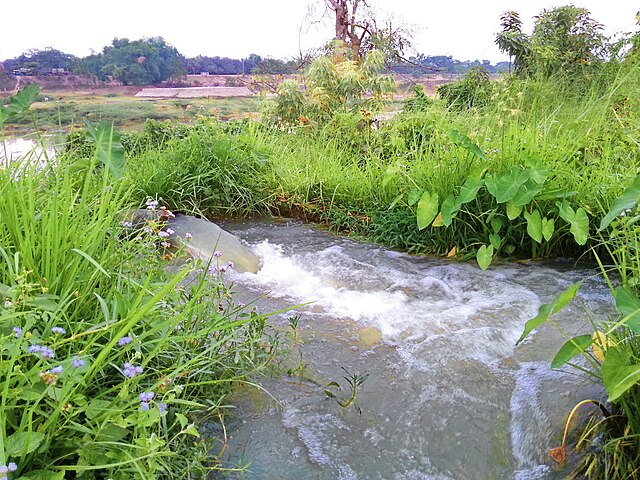Agriculture in Bangladesh
Agriculture is the largest employment sector in Bangladesh, making up 14.2 percent of Bangladesh's GDP in 2017 and employing about 42.7 percent of the workforce. The performance of this sector has an overwhelming impact on major macroeconomic objectives like employment generation, poverty alleviation, human resources development, food security, and other economic and social forces. A plurality of Bangladeshis earn their living from agriculture. Due to a number of factors, Bangladesh's labour-intensive agriculture has achieved steady increases in food grain production despite the often unfavorable weather conditions. These include better flood control and irrigation, a generally more efficient use of fertilisers, as well as the establishment of better distribution and rural credit networks.

As watercourses such as canals, both natural and manmade, and rivers contribute as the vital source of irrigation, their spread across the country is attributed as a key factor for the economic and geographic extent of agriculture in Bangladesh. Photographed is a process of irrigation underway in Comilla, enabled by a pump that is extracting water from the Gumti seen in the background.
Visitor in Agro Tech fair in Dhaka
Tea garden in Sreemangal
Agriculture in Bangladesh
Climate change in Bangladesh
Climate change is a critical issue in Bangladesh as the country is one of the most vulnerable to the effects of climate change. In the 2020 edition of Germanwatch's Climate Risk Index, it ranked seventh in the list of countries most affected by climate calamities during the period 1999–2018. Bangladesh's vulnerability to the effects of climate change is due to a combination of geographical factors, such as its flat, low-lying, and delta-exposed topography, and socio-economic factors, including its high population density, levels of poverty, and dependence on agriculture. The impacts and potential threats include sea level rise, temperature rise, food crises, droughts, floods, and cyclones.
An aerial view of damage to villages and infrastructure following Cyclone Sidr, which swept into southern Bangladesh in 2007.
Population density and height above sea level in Bangladesh (2010)
Agriculture in Bangladesh
Rice growing at the village, Bangladesh.







